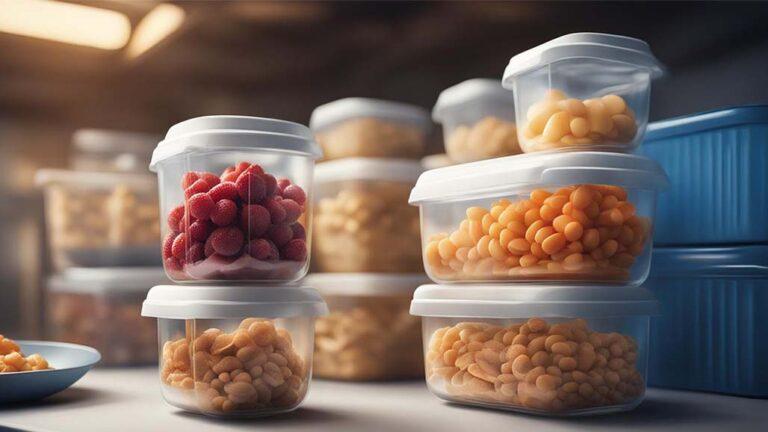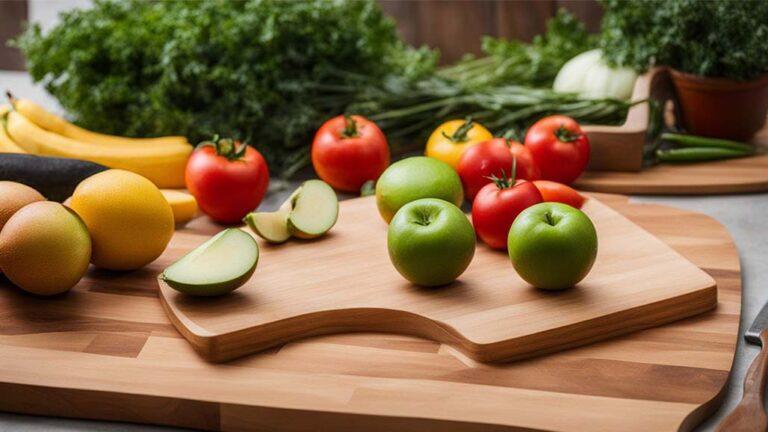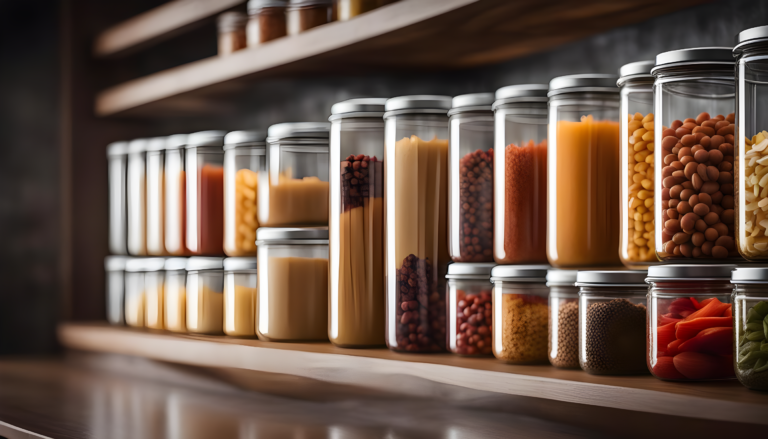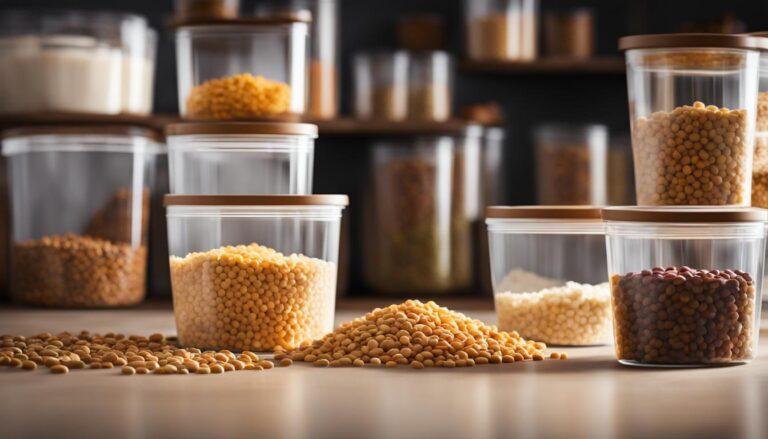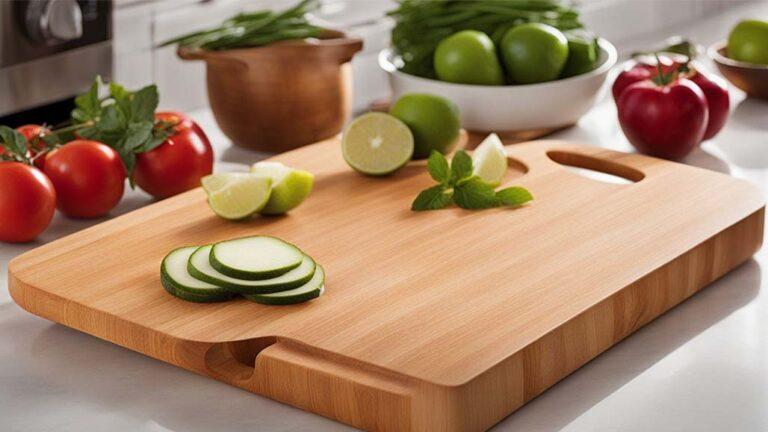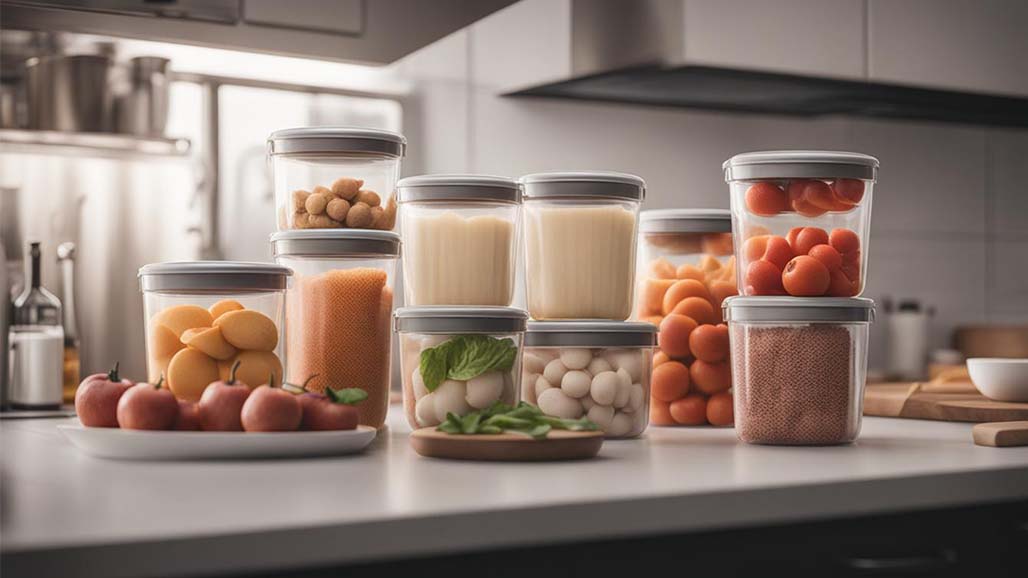
Introduction
When it comes to organizing your kitchen and keeping your food fresh,Which material is best for kitchen storage containers? This question often pops up as we navigate the aisles of stores stocked with various container options. In this comprehensive guide, we’ll explore the types of materials commonly used for kitchen storage containers, their pros and cons, and which material suits different types of food. So, let’s dive into the world of kitchen storage containers and find the perfect fit for your needs.
Plastic storage containers
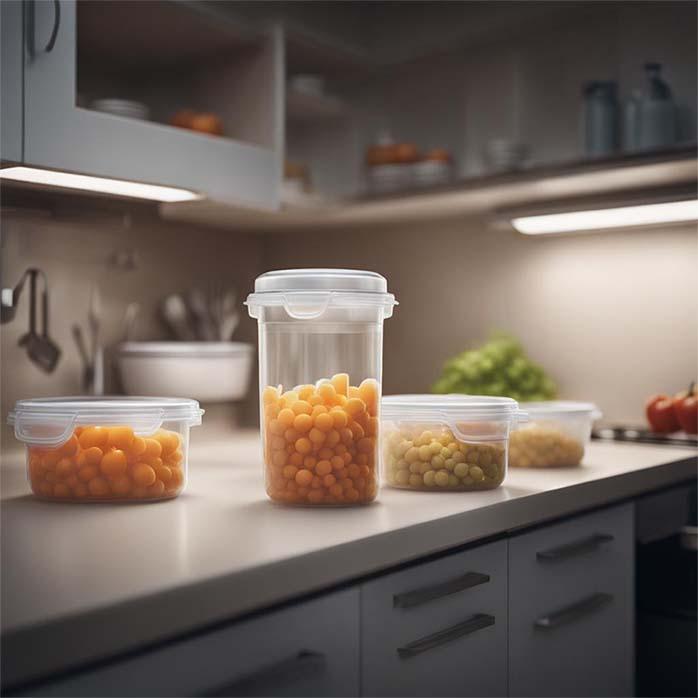
When considering the question, which material is best for kitchen storage containers? plastic is often a practical and versatile choice. Plastic storage containers come in various forms, each with its own set of advantages and considerations.
Lightweight and Easy to Handle
One of the primary benefits of plastic storage containers is their lightweight nature. Unlike heavier materials like glass or stainless steel, plastic containers are easy to handle, making them convenient for on-the-go use and everyday meal prep.
Affordability for Every Budget
Plastic containers are budget-friendly and widely available in various price ranges. This affordability makes them accessible to a wide range of consumers, regardless of their budget constraints.
Durability in Everyday Use
Plastic containers are generally durable and designed to withstand the wear and tear of everyday use. They are less likely to shatter or break if accidentally dropped, which can be especially advantageous in a busy kitchen.
Variety of Shapes and Sizes
Plastic containers come in a diverse range of shapes and sizes, catering to various storage-safe from small containers for individual portions to large ones for bulk storage, you can find a plastic container to suit nearly any purpose.
Versatility in Storage
Plastic containers are suitable for storing a wide range of food items, from dry goods like cereal to liquids like soup or sauces. Their versatility makes them a go-to choice for many households.
Accessibility and Transparency
Many plastic containers are designed with user-friendly features such as Snap-On lids and clear bodies. These features make it easy to access your food and see its contents without opening the container, simplifying meal prep and organization.
Microwave-Safe and Convenient
Most plastic storage containers are microwave-safe, allowing for easy reheating of leftovers. This convenience saves time and reduces the need to transfer food to another dish for heating.
Stackability for Space Efficiency
Plastic containers are often stackable, making efficient use of storage space in your pantry or refrigerator. Their ability to nest within one another minimizes clutter and maximizes organization.
Dishwasher Safe for Easy Cleanup
Many plastic containers are dishwasher safe, streamlining the cleanup process after meals. This feature simplifies the maintenance of your kitchen storage solutions.
Potential for Odor Absorption
One consideration when using plastic storage containers is their potential to absorb odors and stains from certain foods. This can lead to lingering scents and discoloration over time. To mitigate this issue, choose containers made from materials specifically designed to resist odor absorption.
Environmental Concerns
While plastic storage containers offer convenience and affordability, they can raise environmental concerns. Some plastics are not easily recyclable or may contribute to plastic waste in landfills and oceans. To address these concerns, consider using reusable and eco-friendly plastic options, or choose materials like glass or stainless steel if environmental impact is a significant consideration for you.
Glass storage containers
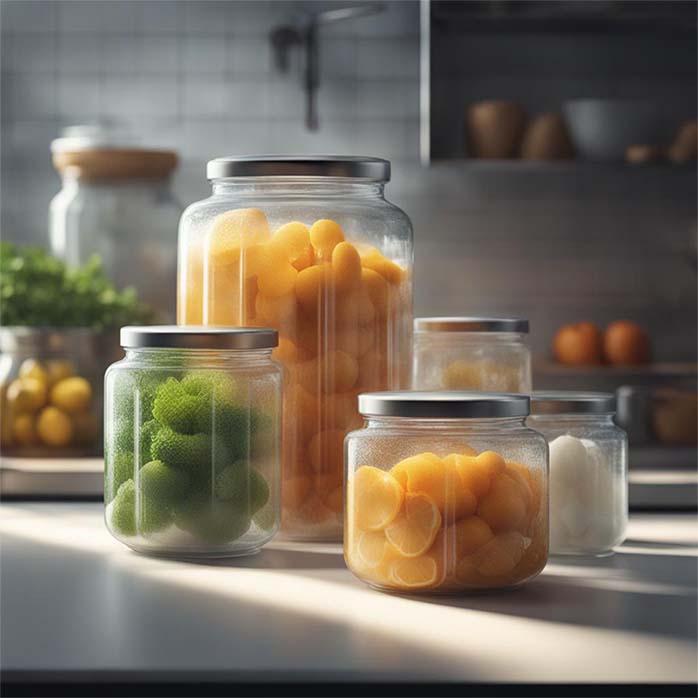
When pondering the question of which material is best for kitchen storage containers? Glass often stands out as an exemplary option. Glass storage containers offer several unique advantages that cater to the needs of many consumers.
Transparency for Easy Identification
One of the standout features of glass containers is their transparency. Unlike opaque materials like stainless steel or some plastics, glass allows you to see the contents of the container at a glance. This feature is particularly handy when you have a variety of items stored, as it eliminates the need to open each container to identify its contents.
Non-porous and Easy to Clean
Glass is naturally non-porous, which means it doesn’t absorb odors, flavors, or stains from the food you store. This feature ensures that your glass containers remain pristine and that your leftovers won’t taste like last week’s curry. Cleaning glass containers is a straightforward task, and most are dishwasher safe, making cleanup a breeze.
Dishwasher and Oven Safe
Many glass storage containers are designed to be both dishwasher and oven-safe. This versatility allows you to use the same container for storing reheating and serving your food. It is a convenient feature that reduces the number of dishes you need to wash and simplifies meal preparation.
Heavy but Sturdy
One consideration when using glass containers is their weight. Glass is heavier than plastic, which can make these containers less suitable for on-the-go use. However, this weight also contributes to their sturdiness. Glass containers are less likely to tip over, providing stability when used in the refrigerator or pantry.
Microwave-Friendly
Glass containers are microwave-friendly, making them an excellent choice for reheating food. Unlike plastic containers that may release potentially harmful chemicals when heated, glass remains inert, ensuring the safety of your food.
Oven Safe for Cooking and Baking
In addition to reheating, some glass containers are safe for cooking and baking in the oven. This feature is particularly useful for dishes that require both storage and further cooking, as it eliminates the need to transfer food to another dish.
Environmentally Conscious Choice
For those concerned about the environment glass is an eco-friendly choice. It is fully recyclable and can be reused for an extended period reducing the need for disposable containers that contribute to landfill waste.
Price Considerations
While glass containers offer numerous benefits, they tend to be more expensive upfront than some plastic options. However, when assessing their durability, versatility, and sustainability, glass containers often prove to be a cost-effective choice over time.
Fragility and Breakage
The main drawback of glass storage containers is their fragility. They can shatter if dropped, potentially creating a safety hazard and requiring replacement. To mitigate this risk, handle glass containers with care, and avoid extreme temperature changes, such as transferring a cold container directly into a hot oven.
Stainless steel storage containers
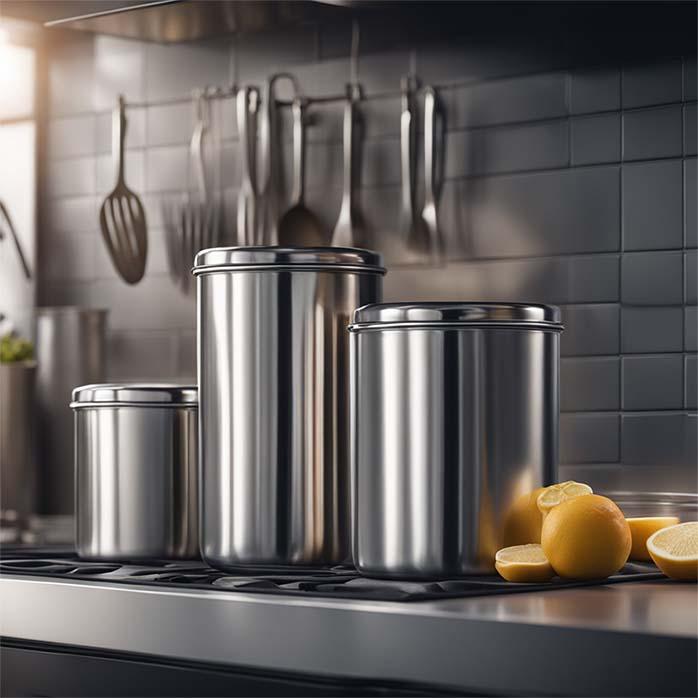
Stainless steel storage containershave long been a favorite choice for kitchen utensils and appliances, and it’s no different when it comes to storage containers. In our quest to answer the question, which material is best for kitchen storage containers? stainless steel deserves a dedicated examination.
Durability Beyond Compare
Stainless steel storage containers are renowned for their exceptional durability. They can withstand the test of time, resisting dents, scratches, and corrosion. This durability ensures that your investment in stainless steel containers is a long-term one, saving you money in the long run.
Non-Porous and Odor-Resistant
One of the standout qualities of stainless steel is its non-porous nature. This means that it won’t absorb odors or flavors from the food you store in it. Whether you’re storing spaghetti sauce or curry, your stainless steel containers won’t retain lingering scents.
Rust-Resistant for Longevity
Stainless steel earns its name from its ability to resist staining and rusting. Even when exposed to moisture, stainless steel remains unblemished. This is particularly important in kitchen storage, where containers are frequently in contact with liquids and varying temperatures.
Dishwasher Safe for Convenience
Cleaning stainless steel containers is a breeze. Most stainless steel storage containers are dishwasher safe, making cleanup after a meal a hassle-free process. This convenience can save you valuable time in the kitchen.
Transparent vs. Non-Transparent
One drawback of stainless steel containers is their lack of transparency. Unlike glass or some plastic containers, you can’t see the contents without opening them. This may require labeling or memorizing what you’ve stored in each container.
Not Suitable for Microwave or Oven Use
While stainless steel excels in many areas, it’s not suitable for microwave or oven use. Unlike glass, it won’t allow you to see how your food is heating, and it can become extremely hot when exposed to heat. This limitation may necessitate transferring your food to a microwave-safe dish for reheating.
A Green and Sustainable Choice
For those with an eco-friendly mindset stainless steel is a commendable choice. It is fully recyclable meaning that when you are ready to replace your containers. They can be repurposed rather than contributing to landfill waste.
Style Meets Functionality
Stainless steel containers exude a sleek and modern aesthetic that can elevate the appearance of your kitchen. Their shiny and polished surfaces are not only visually appealing but also easy to clean, adding an element of sophistication to your culinary space.
The Price Factor
While stainless steel offers numerous advantages. it is worth noting that quality stainless steel containers can be more expensive upfront compared to some plastic options. However, considering their long lifespan and durability they often prove to be a wise investment over time.
Sustainability and Eco-Friendly Choices
When making the critical decision about which material is best for kitchen storage containers? It is crucial to think about how your decision may affect the environment. Sustainable and eco-friendly options are gaining popularity in today’s world where reducing our carbon footprint is a shared responsibility.
Bamboo Storage Containers
Bamboo deserves a special mention for its eco-friendliness. It is a renewable resource that grows rapidly and requires minimal water and no pesticides. Bamboo storage containers are not only durable but also biodegradable making them a fantastic choice for environmentally conscious consumers.
Glass and Stainless Steel
Other eco-friendly materials are glass and stainless steel. They do not leak dangerous chemicals into the environment and are extremely robust which reduces the need for frequent replacements. These materials are recyclable when it’s time to get rid of them.
Plastic Alternatives
For those who still prefer the convenience of plastic but want to make eco-conscious choices, look for containers made from recycled or biodegradable plastics. These options reduce plastic waste and are a step towards a more sustainable future.
Design and Aesthetics
Beyond functionality, aesthetics play a role in your choice of kitchen storage containers. The design of your containers can enhance the overall look of your kitchen.
Glass Elegance
Glass containers often come in sleek and elegant designs. Since they are translucent, you can see what’s inside. This transparency can also be helpful when identifying items in your pantry or refrigerator.
Stainless Steel Modernity
Stainless steel containers exude a modern and minimalistic vibe. Their shiny and smooth finish can add a touch of sophistication to your kitchen.
Colorful Plastic
Plastic containers offer a wide range of colors and designs. They can be a playful addition to your kitchen, especially if you prefer a vibrant and lively atmosphere.
Stackability and Space Efficiency
Considering your kitchen’s available space is crucial when deciding which material is best for kitchen storage containers? Containers that stack neatly can save valuable shelf or cabinet space.
Plastic’s Space-Saving Advantage
Plastic containers are often lightweight and designed for efficient stacking. They are an excellent choice if you have limited cabinet or pantry space.
Glass and Stainless Steel’s Bulkier Nature
Glass and stainless steel containers tend to be bulkier and may not be as space-efficient. However, their durability and other benefits may outweigh this drawback for some users.
Brand and Quality Considerations
The quality of your kitchen storage containers can significantly impact their performance and longevity. Opting for reputable brands known for producing durable and safe containers is a wise choice.
Trusted Brands for Plastic
For plastic containers, consider brands like Rubbermaid, Tupperware, and Pyrex, which have established a reputation for quality and safety.
Well-known names in Glass and Stainless Steel
In the realm of glass and stainless steel containers, Pyrex and OXO are well-known for their reliability and durability. Investing in containers from trusted brands can provide peace of mind.
The Role of Lids
Lids are an often-overlooked aspect of kitchen storage containers. They are essential for maintaining freshness and preventing spills.
Airtight Seals for Freshness
Look for containers with airtight seals, especially if you plan to store perishable items. A secure seal keeps air out, prolonging the freshness of your food.
Stackable Lids
Consider containers with stackable lids to keep your storage area organized. This feature also prevents the frustration of searching for matching lids.
Ease of Cleaning
Nobody enjoys spending hours cleaning kitchen storage containers. Easy-to-clean options can save you time and effort.
Dishwasher-Safe Convenience
Many plastic, glass, and stainless steel containers are dishwasher safe, simplifying the cleaning process. To ensure compatibility with your dishwasher, check the manufacturer’s instructions.
Which Material Is Best for Different Types of Food?
Selecting the right material for your kitchen storage containers isn’t just about the material itself; it’s also about the type of food you plan to store. Different foods have unique requirements, and the choice of container material can influence their freshness and safety. Let’s explore which material is best for various types of food:
Fruits and Vegetables:
Glass and Ceramic: Fruits and vegetables benefit from the breathability of glass and ceramic containers. These materials allow for better air circulation, which helps maintain freshness. Additionally, the transparency of glass makes it easy to identify your produce. Avoid plastic containers for long-term storage of fruits and vegetables, as they may trap moisture and lead to spoilage.
Meat and Poultry:
Stainless Steel and Glass: Meat and poultry are best stored in containers that can be easily sanitized and are resistant to absorbing odors. Stainless steel and glass containers fit the bill. Stainless steel resists staining and is easy to clean while glass is non-porous and won’t retain meaty odors. When using plastic containers for meat and poultry wrap the items tightly in plastic wrap or foil before placing them in the container to prevent contamination.
Fish and Seafood:
Glass and Stainless Steel: Similar to meat and poultry, fish and seafood benefit from the non-porous properties of glass and stainless steel. These materials prevent the spread of odors and help maintain the delicate flavors of seafood. Ensure airtight seals to prevent the escape of moisture and the entry of unwanted odors.
Dairy Products:
Glass and Plastic: Dairy products like milk, yogurt, and cheese can be stored in glass or plastic containers. Glass containers are non-reactive and maintain the integrity of dairy flavors. Plastic containers are a convenient option, especially for items like yogurt cups. Make sure the containers have airtight seals to prevent spoilage.
Leftovers:
Glass, Stainless Steel, and Plastic Leftovers often require reheating, so microwave-safe containers are essential. Glass and stainless steel containers are suitable for reheating leftovers in the oven or microwave. Some plastics are microwave-safe but always check the label. Ensure the container is designed for reheating to avoid releasing harmful chemicals into your food.
Dry Goods:
Plastic, Glass, and Ceramic: Dry goods like rice, pasta, and flour can be stored in a variety of containers. Plastic containers are lightweight and practical for dry goods with a longer shelf life. Glass and ceramic containers are also suitable, especially for items that might benefit from being displayed on your kitchen shelves, adding a decorative touch to your space.
Factors to Consider When Choosing which material is best for kitchen storage containers?
Containers:
Beyond the type of food you plan to store, several factors should guide your choice of kitchen storage containers:
Durability:
Consider how long you intend to use the containers. Materials like stainless steel and glass tend to be more durable and long-lasting compared to some plastics.
Versatility:
Think about the various uses you’ll have for your containers. Versatile materials like glass and stainless steel can go from storage to reheating or even baking.
Safety:
Prioritize containers made from food-safe materials that won’t leach harmful chemicals into your food. Check for BPA-free options in plastics.
Price:
The material of the container you choose could be influenced by your budget. While glass and stainless steel containers may have a greater initial cost, they can be a more cost-effective long-term investment than plastic containers.
Sustainability:
Consider recyclable or biodegradable materials like glass or bamboo for customers who care about the environment. Your particular demands and priorities will determine which material is appropriate for different sorts of food. When choosing your choice take into account the qualities of the food you’re storing as well as elements like robustness safety, cost, and sustainability. You can make sure that your food is always fresh secure and well-organized in your kitchen by choosing the correct material for your culinary needs.
Tips for Choosing the Best Material for Kitchen Storage Containers
Selecting the right material for your kitchen storage containers can significantly impact the freshness, organization, and safety of your food. Here are some valuable tips to guide your decision:
1. Consider Food Compatibility:
Think about the types of food you frequently store. Some materials are better suited for specific foods. For example, glass and stainless steel are ideal for meat and dairy, while plastic is suitable for dry goods and leftovers.
2. Prioritize Safety:
Choose containers made from food-safe materials that won’t leach harmful chemicals into your food. Look for labels indicating that the material is free from BPA (Bisphenol A) and other potentially hazardous substances.
3. Durability Matters:
Consider the lifespan of your containers. Stainless steel and glass tend to be more durable and long-lasting compared to some plastics. If you want containers that can withstand years of use, invest in quality materials.
4. Versatility Is Key:
Opt for containers that can serve multiple purposes. Versatile materials like glass and stainless steel can go from storage to reheating or even baking, reducing the need for multiple types of containers.
5. Look for Airtight Seals:
Ensure that your containers have secure and airtight seals. This feature is crucial for preserving the freshness of your food and preventing moisture and odors from entering or escaping.
6. Check for Microwave and Oven Compatibility:
If you frequently reheat food in the microwave or oven, select containers that are microwave and oven-safe. Glass and some plastics are suitable for these purposes, but always check the manufacturer’s instructions.
7. Think About Transparency:
Consider whether you prefer containers with transparent bodies. Glass and some plastics allow you to see the contents without opening the container, simplifying the organization and meal preparation.
8. Evaluate Weight and Stackability:
Think about the weight of the containers, especially if you plan to use them for on-the-go purposes. Plastic containers are lightweight, while glass and stainless steel are heavier. Additionally, consider whether the containers can be stacked efficiently to maximize storage space.
9. Factor in Eco-Friendliness:
For those concerned about the environment, choose materials that are recyclable or biodegradable, such as glass or bamboo. Consider reusable and eco-friendly plastic options if you prefer plastic containers.
10. Budget Wisely:
Keep your budget in mind when making your choice. Plastic containers are often the most affordable, while glass and stainless steel containers may have a higher upfront cost but can offer long-term value.
11. Trust Reputable Brands:
Consider containers from trusted brands known for their quality, safety, and durability. Reputable brands often provide warranty coverage and peace of mind.
12. Read User Reviews:
Before purchasing, read user reviews and testimonials to gain insights into the performance and longevity of specific container brands and materials.
13. Experiment with Variety:
Don’t be afraid to mix and match materials based on your needs. You can have glass containers for items you reheat frequently and plastic containers for dry goods or meal prep.
14. Label and Organize:
Regardless of the material you choose, label your containers to keep track of expiration dates and contents. Organize your kitchen storage to make it easy to access what you need.
15. Sustainable Practices:
Practice responsible disposal of your containers when they reach the end of their lifespan. Recycle or repurpose glass and plastic containers, or choose materials that have a minimal environmental impact.
In conclusion, the best material for your kitchen storage containers depends on your specific requirements and priorities. Consider the types of food you store, your budget, safety concerns, durability, versatility, and eco-friendliness when making your decision. By following these tips, you’ll be well-equipped to choose the perfect containers to enhance your kitchen organization and food storage practices.
Conclusion
In the grand exploration of which material is best for kitchen storage containers? we’ve journeyed through the characteristics and considerations of three popular materials: glass, stainless steel, and plastic. Each material possesses its unique set of advantages and drawbacks, catering to diverse needs and preferences in the culinary realm.
Glass: The Window to Freshness
Glass stands out for its transparency, non-porous properties, and ease of cleaning. Its ability to maintain food integrity, whether in storage, reheating, or baking, makes it a versatile choice for many. While it may be heavier and more fragile, the clear advantage of glass is its ability to provide a visual connection with your stored items, simplifying the organization and minimizing guesswork in the kitchen.
Stainless Steel: The Durable Companion
Stainless steel has earned its reputation for durability and resistance. It excels in maintaining freshness, resisting odors, and enduring the test of time. Its modern aesthetic adds a touch of sophistication to your kitchen. Though not transparent and unsuitable for the microwave or oven, stainless steel compensates for its eco-friendly nature and long-term value.
Plastic: The Everyday Workhorse
Plastic containers offer practicality, affordability, and versatility. Their lightweight nature, budget-friendly prices, and resistance to breakage make them an everyday workhorse in the kitchen. Plastic containers come in an array of shapes and sizes, accommodating various storage needs. While they may absorb odors and raise environmental concerns, eco-friendly options, and responsible disposal practices can help mitigate these issues.
The Ultimate Choice: Personal and Practical
In the end, the choice of the best kitchen storage container material depends on your unique requirements, lifestyle, and values. Consider your priorities, whether they are transparency, durability, budget, or eco-friendliness, and let those guide your decision.
Whichever material you choose, remember that the goal is to enhance your kitchen experience, making food storage and organization seamless and enjoyable. As you embark on your journey to find the perfect fit, rest assured that each material offers its own set of benefits, ensuring that your culinary adventures remain fresh and organized.

